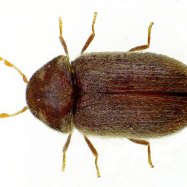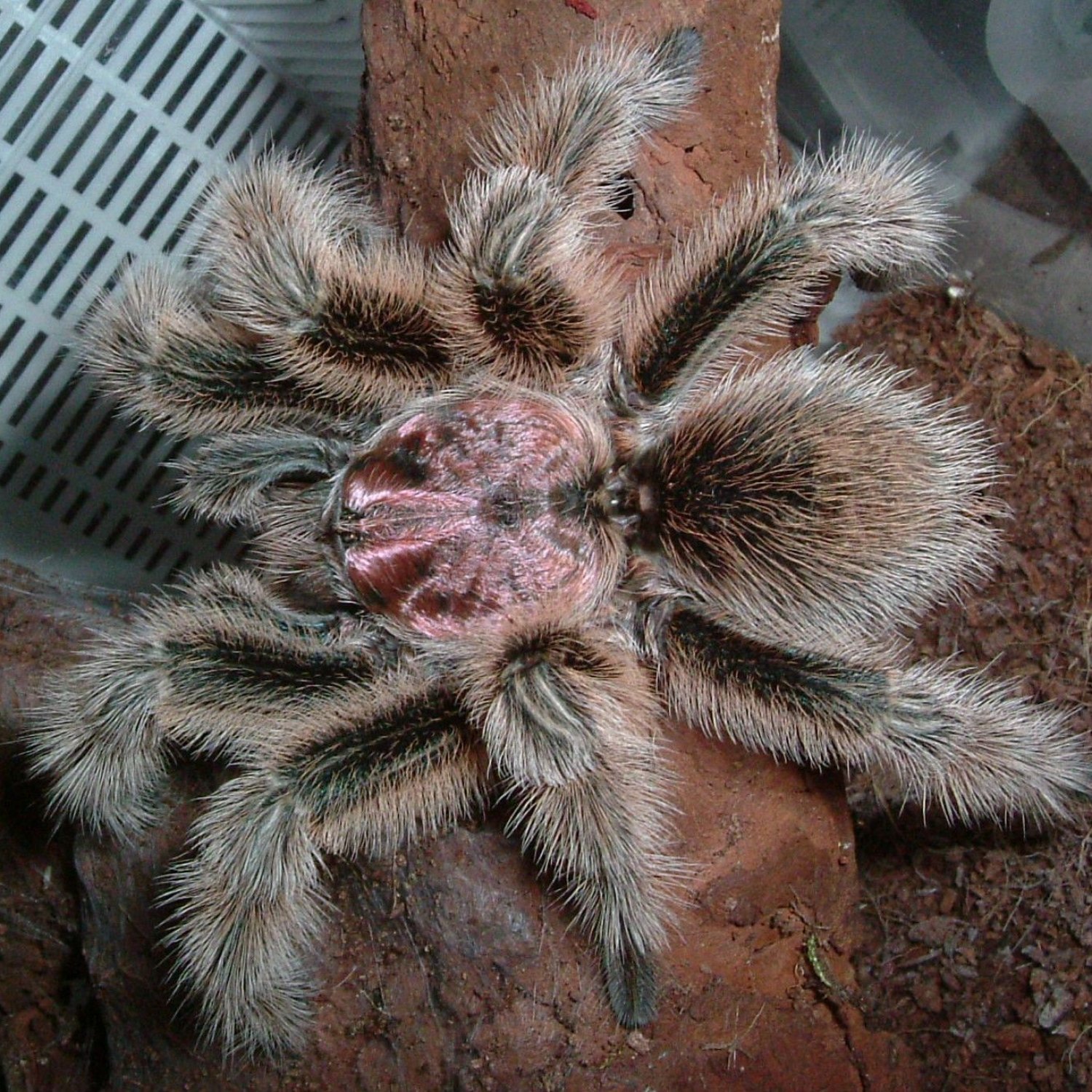
Chilean Rose Tarantula
5 to 6 inches (12.7 to 15.2 cm)
Looking for a pet that is both fascinating and low-maintenance? Consider the Chilean Rose Tarantula from South America. With a length of 5 to 6 inches and a body shape that is large and hairy, these creatures are a great addition to any pet collection. As part of the Theraphosidae family, they are known for their docile nature and beautiful pink and black appearance. Get ready to be charmed by this unique arachnid!
Animal Details Summary:
Common Name: Chilean Rose Tarantula
Kingdom: Animalia
Habitat: Deserts and scrublands
The Fascinating World of the Chilean Rose Tarantula
The mention of a tarantula may elicit fear and disgust in some people, but the Chilean Rose Tarantula (Grammostola rosea) is a creature that challenges those preconceived notions. This unique arachnid, also known as the Chilean Fire Tarantula, has a surprising range of characteristics that make it a captivating creature to learn about.Introduction
The Chilean Rose Tarantula is a member of the Theraphosidae family, commonly known as the tarantula family. These spiders are found all over the world, with the majority of species residing in the Americas Chilean Rose Tarantula. The Chilean Rose Tarantula, however, is native to the deserts and scrublands of Chile and is the only species of tarantula in the country.The Kingdom, Phylum, Class, and Order of the Chilean Rose Tarantula
The Chilean Rose Tarantula belongs to the Kingdom Animalia, which includes all animals on Earth. Its Phylum is Arthropoda, which means "jointed legs," and consists of animals with segmented bodies, exoskeletons, and jointed appendages. The Chilean Rose Tarantula falls under the Class Arachnida, a group that includes spiders, scorpions, and ticks. The Order of the Chilean Rose Tarantula is Araneae, which refers to spiders specifically.Habitat and Geographical Distribution
As mentioned earlier, the Chilean Rose Tarantula is native to the deserts and scrublands of Chile. These spiders prefer dry and warm environments and can be found in regions with sparse vegetation and sandy or rocky terrain. They are also known to live in burrows or shelter under rocks or logs.Despite their name, the Chilean Rose Tarantula is not exclusive to Chile and can also be found in other parts of South America, including Bolivia and Argentina Chihuahua Mix.
The Rose Tarantula's Coloration and Body Shape
One of the most captivating features of the Chilean Rose Tarantula is its vivid coloration. It is usually pink, rose, or brown in color, with some individuals displaying a mix of these hues. This vibrant coloration makes them stand out in their natural desert habitat and also acts as a warning to potential predators.Another visually striking feature of this tarantula is its large and hairy body. It can grow up to 5-6 inches (12.7-15.2 cm) in length, making it one of the larger species of tarantula. Its body is covered in fine hairs, which serve multiple purposes, including providing insulation, sensing vibrations, and deterring predators.
Feeding Method and Carnivorous Diet
The Chilean Rose Tarantula is a carnivorous creature, meaning it primarily feeds on other animals. Its diet consists of a variety of insects, including crickets, cockroaches, and grasshoppers. Due to their slow-moving nature, these spiders are ambush predators, lying in wait for their prey. They have strong jaws and fangs capable of injecting venom, which helps immobilize their prey and aids in the digestion process.While some tarantula species use webs to catch their prey, the Chilean Rose Tarantula relies on its speed and agility to capture its meals.
Country of Origin and Location
As mentioned earlier, the Chilean Rose Tarantula is native to Chile, making it the country of origin for this unique creature. Today, they can also be found in other parts of South America, but they are most abundant in their homeland.Why the Chilean Rose Tarantula is an Important Member of its Ecosystem
Many people may not see the value in a creature like a tarantula, but the Chilean Rose Tarantula plays a crucial role in its ecosystem. As predators, they help control insect populations, ensuring that they do not become too abundant and unbalance the ecosystem. Additionally, their burrowing habits help with soil aeration, which benefits plant growth.Threats to the Chilean Rose Tarantula's Survival
Unfortunately, the Chilean Rose Tarantula is facing some threats to its survival. One of the biggest threats is the pet trade, as these spiders are popular in the exotic pet market. Many are captured from the wild, and irresponsible breeding practices can further harm wild populations.Loss of habitat due to human development and climate change is also a significant threat to this species. Without proper protection and conservation efforts, the Chilean Rose Tarantula could face population declines in the future.
In Conclusion
The Chilean Rose Tarantula may not be the most conventional or popular of creatures, but it is undoubtedly a fascinating one. Its vivid coloration, unique body shape, and essential role in its ecosystem make it a species worth learning about and protecting. As we continue to explore and appreciate the diverse array of creatures on our planet, we must ensure that we do so with respect and conservation in mind.

Chilean Rose Tarantula
Animal Details Chilean Rose Tarantula - Scientific Name: Grammostola rosea
- Category: Animals C
- Scientific Name: Grammostola rosea
- Common Name: Chilean Rose Tarantula
- Kingdom: Animalia
- Phylum: Arthropoda
- Class: Arachnida
- Order: Araneae
- Family: Theraphosidae
- Habitat: Deserts and scrublands
- Feeding Method: Carnivorous
- Geographical Distribution: Chile
- Country of Origin: Chile
- Location: South America
- Animal Coloration: Pink, rose, or brown
- Body Shape: Large and hairy
- Length: 5 to 6 inches (12.7 to 15.2 cm)
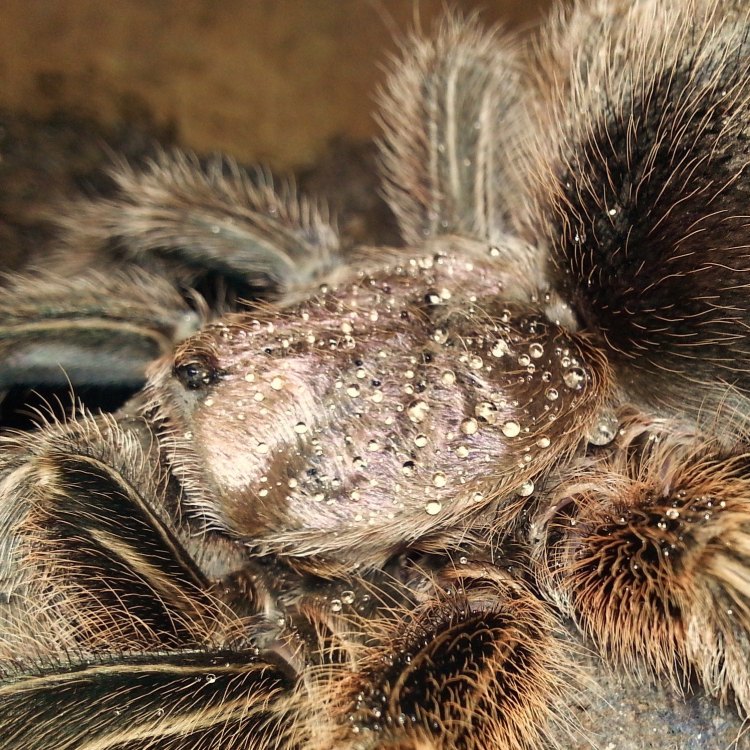
Chilean Rose Tarantula
- Adult Size: 5 to 6 inches (12.7 to 15.2 cm)
- Average Lifespan: 15 to 20 years
- Reproduction: Sexual
- Reproductive Behavior: Male performs mating dance
- Sound or Call: None
- Migration Pattern: Non-migratory
- Social Groups: Solitary
- Behavior: Nocturnal and burrows underground
- Threats: Habitat loss and collection for pet trade
- Conservation Status: Least Concern
- Impact on Ecosystem: Preys on insects and helps control their populations
- Human Use: Collected for pet trade
- Distinctive Features: Rose-colored hairs on its body
- Interesting Facts: It is a popular pet tarantula due to its calm demeanor and hardiness.
- Predator: Birds and small mammals
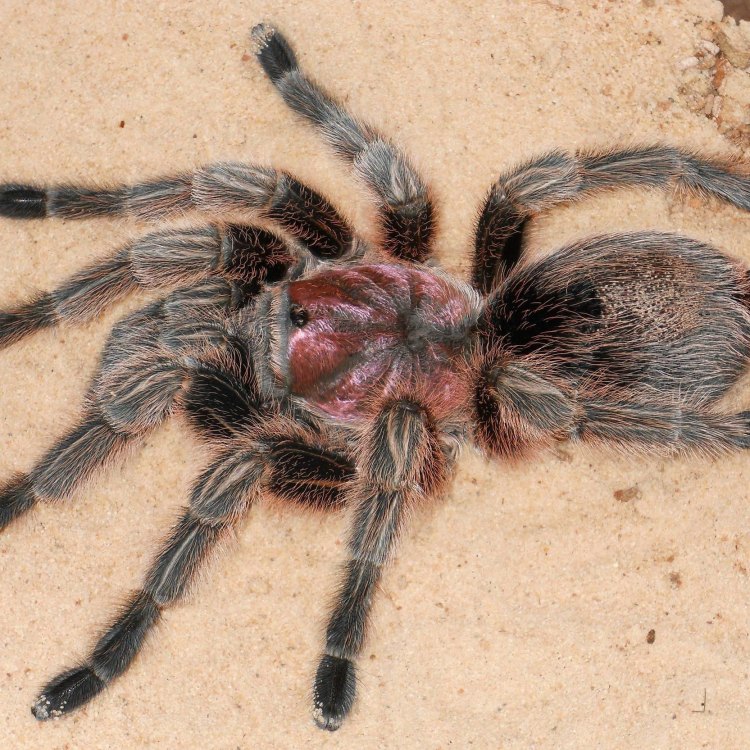
Grammostola rosea
The Beautiful and Fascinating Chilean Rose Tarantula: A Combination of Gentleness and Resilience
The world of spiders can be a mysterious and intimidating one for many people, but one species stands out as both beautiful and fascinating: the Chilean Rose Tarantula. Known for its rose-colored hairs and calm demeanor, this arachnid has captured the hearts of many people, becoming a popular pet and a symbol of resilience in the animal kingdom.Adult Chilean Rose Tarantulas can reach a length of 5 to 6 inches (12.7 to 15 PeaceOfAnimals.Com.2 cm), making them one of the larger species of tarantula. They have an impressive lifespan of 15 to 20 years, which is significantly longer than most other tarantula species. This means that if you decide to keep one as a pet, you will have a long-term companion who will be with you for many years to come.
In terms of reproduction, these tarantulas engage in sexual reproduction, as opposed to asexual reproduction, which some other species are capable of. This means that in order for them to reproduce, a male and a female must come together and mate.
The reproductive behavior of the Chilean Rose Tarantula is quite unique and involves a mating dance performed by the male. This dance is a way for the male to impress the female and show his potential as a mate. As the male approaches the female, he will rhythmically move his legs and abdomen in a specific pattern. This behavior is not only mesmerizing but also reflects the agility and grace of these creatures Camel.
One might expect such a majestic dance to be accompanied by some sort of sound or call, but the Chilean Rose Tarantula is a silent creature. They do not produce any sounds or vocalizations, making them exceptionally quiet pets.
Unlike some bird species that undertake long migrations, the Chilean Rose Tarantula is non-migratory. Once they settle in a specific location, they are likely to stay there for the rest of their lives. This means that individuals in captivity can thrive in their tanks and do not need to be moved often.
As solitary creatures, the Chilean Rose Tarantula prefers to live alone and does not form social groups. They are generally nocturnal, meaning they are mostly active at night and prefer to burrow underground during the day. This secretive behavior makes them quite elusive in their natural habitat, and their nocturnal habits make them challenging to spot by humans.
Despite their solitary nature, these tarantulas do play an essential role in the ecosystem. As predators, they primarily prey on insects and help control their populations. This helps maintain a healthy balance in the ecosystem and prevents a buildup of insect populations that could be harmful to the environment.
Unfortunately, the Chilean Rose Tarantula is facing some threats in the wild, including habitat loss and collection for the pet trade. These spiders are native to the Atacama Desert in Chile, which is experiencing increasing levels of human disturbance and development. This has led to a decline in their natural habitat, making them more vulnerable to extinction.
The pet trade is also a significant threat to the Chilean Rose Tarantula. Due to their calm demeanor and hardiness, they have become a popular choice for a pet. While this may seem harmless, the overcollection of these tarantulas from the wild can have a detrimental impact on their populations. This is why it is important to only purchase these spiders from reputable breeders who ethically raise them in captivity.
Despite these threats, the conservation status of the Chilean Rose Tarantula is currently listed as Least Concern by the International Union for Conservation of Nature (IUCN). This means that although they are facing some challenges, their populations are still stable at the moment. However, continued monitoring and conservation efforts are necessary to ensure their survival in the wild.
Apart from being collected for the pet trade, the Chilean Rose Tarantula does not have any significant human use. They are not known to have any medicinal or commercial value and are primarily kept as pets or viewed in educational settings.
One of the most distinctive features of the Chilean Rose Tarantula is, as the name suggests, its rose-colored hairs. These hairs cover its entire body, giving it a soft and velvety appearance. This unique feature is what makes these tarantulas so visually striking and desirable as pets.
Now, let's explore some interesting facts about the Chilean Rose Tarantula that may surprise you:
- Despite their large size, these tarantulas are lightweight, and their exoskeleton is quite delicate. This makes them quite fragile and requires careful handling, especially when keeping them as pets.
- They are known for their docile and gentle nature, making them an excellent choice for first-time tarantula owners. With proper care and handling, they can become quite comfortable and interactive with their human caregivers.
- The Chilean Rose Tarantula has the ability to regenerate lost limbs, a characteristic shared by most arachnids. This means that if they lose a leg in a struggle or to defend themselves, they can regrow it over time.
- Like all tarantulas, the Chilean Rose Tarantula can also flick their urticating hairs when threatened, as a defense mechanism. These tiny hairs are irritating to the skin and can cause a stinging sensation, so it's best to avoid provoking them.
- As predators, these tarantulas have venom that is primarily used to immobilize their prey. While their venom is not considered dangerous to humans, it can cause some mild reactions, such as swelling or itching. However, only individuals who are allergic to their venom may experience more severe symptoms.
- Despite their calm and gentle nature, the Chilean Rose Tarantula is still vulnerable to predators in the wild. Their main predators include birds, such as owls, and small mammals, such as rodents. These predators are attracted to their soft and slow-moving bodies, making them easy targets.
- In Chile, the Chilean Rose Tarantula is known as "araña pollito," which translates to "little chicken spider." This is because of their plump and round abdomen, resembling a small chicken. This nickname reflects the friendly and approachable nature of these tarantulas in their native country.
In conclusion, the Chilean Rose Tarantula is not only a beautiful and fascinating creature but also a symbol of resilience in the face of threats and challenges. Their unique features, calm demeanor, and important role in the ecosystem make them a treasured species that deserves protection and conservation efforts. While they may not be everyone's idea of a perfect pet, for those who appreciate their gentle nature and fascinating behavior, they are a valuable addition to any household.
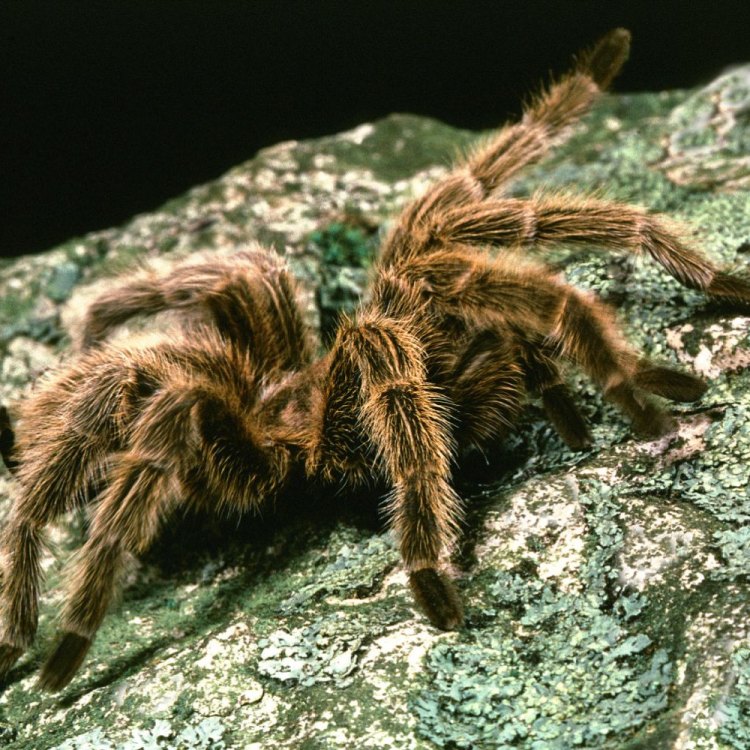
The Fascinating World of the Chilean Rose Tarantula
Disclaimer: The content provided is for informational purposes only. We cannot guarantee the accuracy of the information on this page 100%. All information provided here may change without prior notice.









